Our studio cares for a wide range of artworks, including traditional prints in monochrome and colour. Lithographs are popular as both an antique and contemporary medium, from Eugene Delacroix in the 1820s to David Hockney in the 1970s. Their value as a limited edition or rare print may be substantial, with some lithographs reaching six figures at auction.
 Above: a selection of lithographs including works by Van Gogh, Toulouse-Lautrec, Cezanne and William Blake
Above: a selection of lithographs including works by Van Gogh, Toulouse-Lautrec, Cezanne and William Blake
Like many artworks on paper, lithographs can suffer from changes in the environment, water damage, foxing and poor framing materials. This article will cover the history and care of valuable prints, including what to look out for when deciding on their mount, frame and display location.
 Above: a detail from a chromolithograph of figures skating in New York after Winslow Homer, 1861
Above: a detail from a chromolithograph of figures skating in New York after Winslow Homer, 1861
What is a lithograph?
This unique printmaking process can be traced back to the late 18th century. Unlike typical intaglio prints such as engravings, etchings and mezzotints that use a recess to collect the ink or woodblock prints that have ink sit on the surface, lithographs use the natural contrast of oil and water on a flat stone or metal plate.
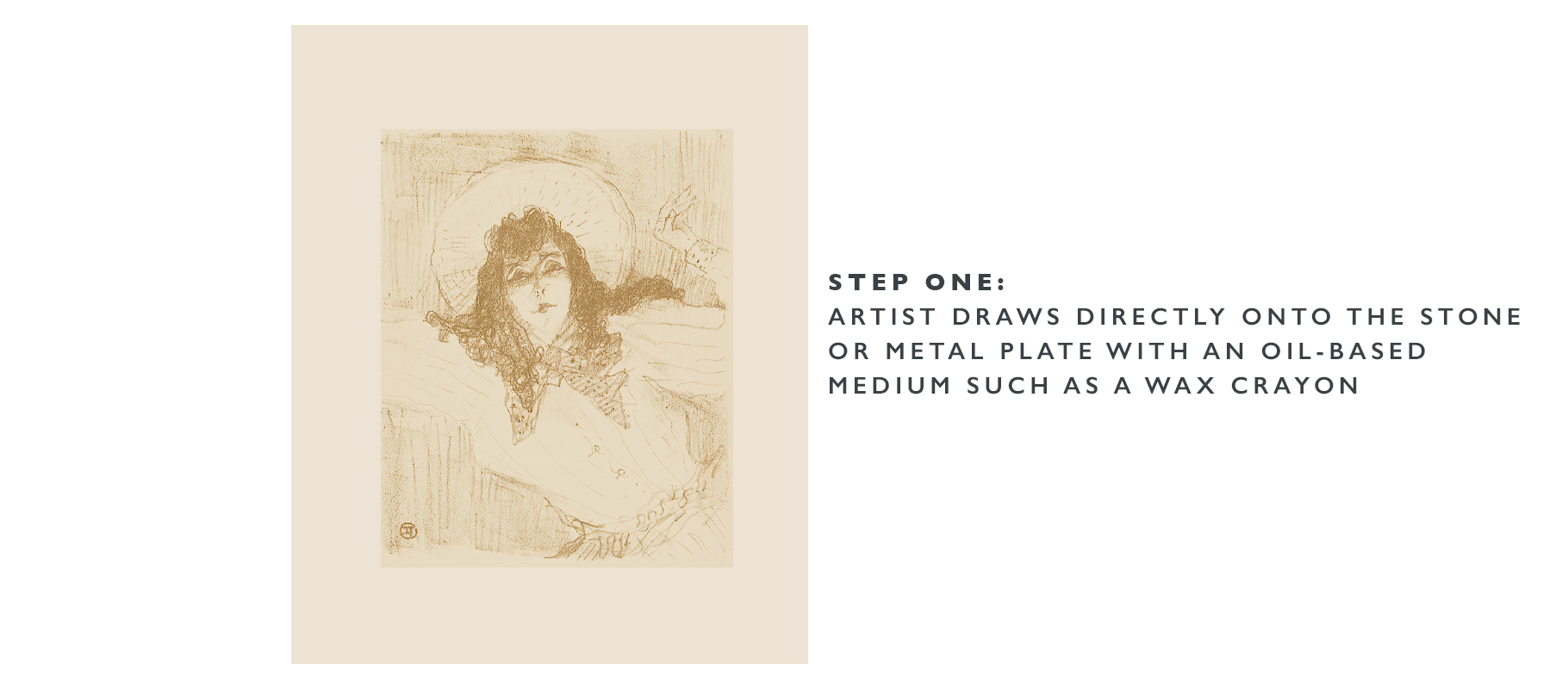
The positive of the image is created from an oil medium such as wax or animal fat. This can be created with a pigmented colour to make it easier for the artist to see their composition.
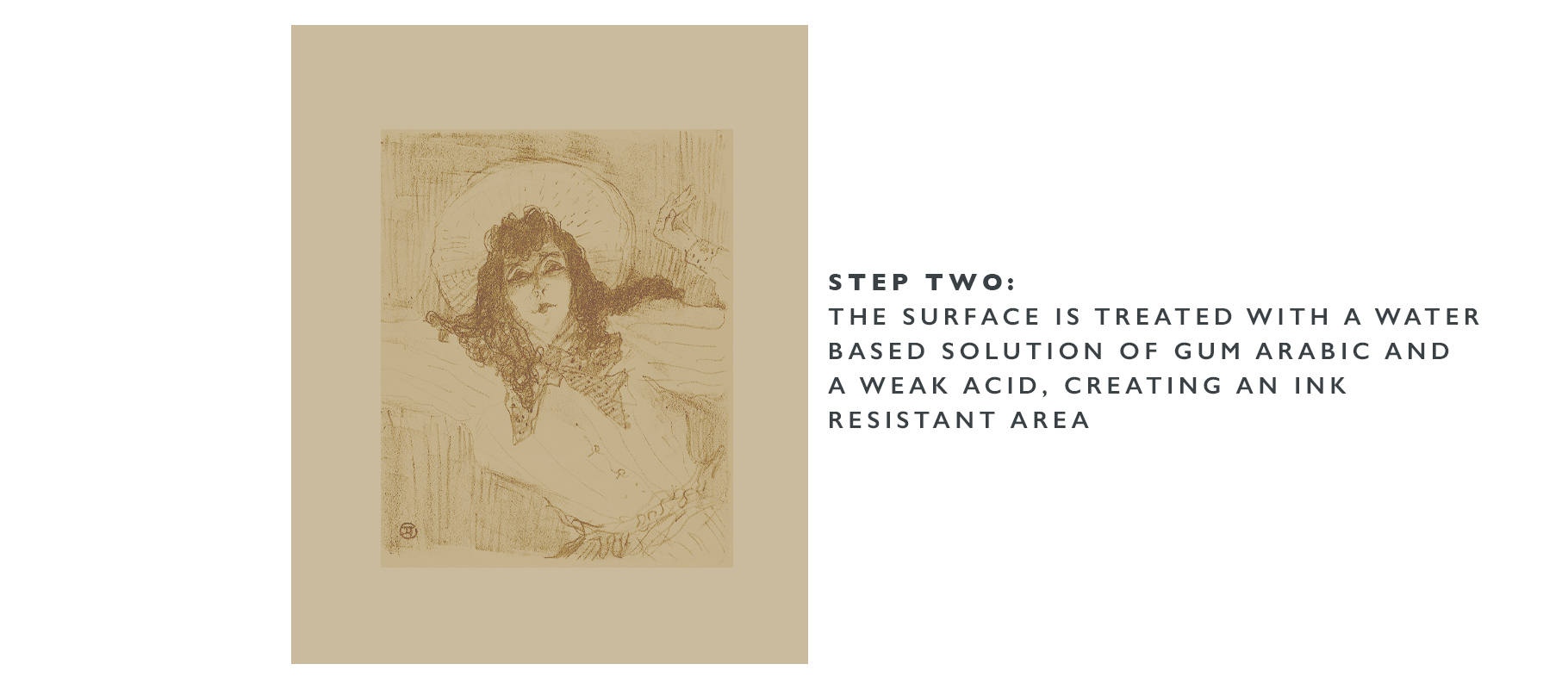
The stone or metal is then applied with a water based solution, this is usually gum arabic mixed with a weak acid. This creates a gum arabic layer on all areas that have not been drawn with the oil based medium, creating an area that will not accept printing ink.
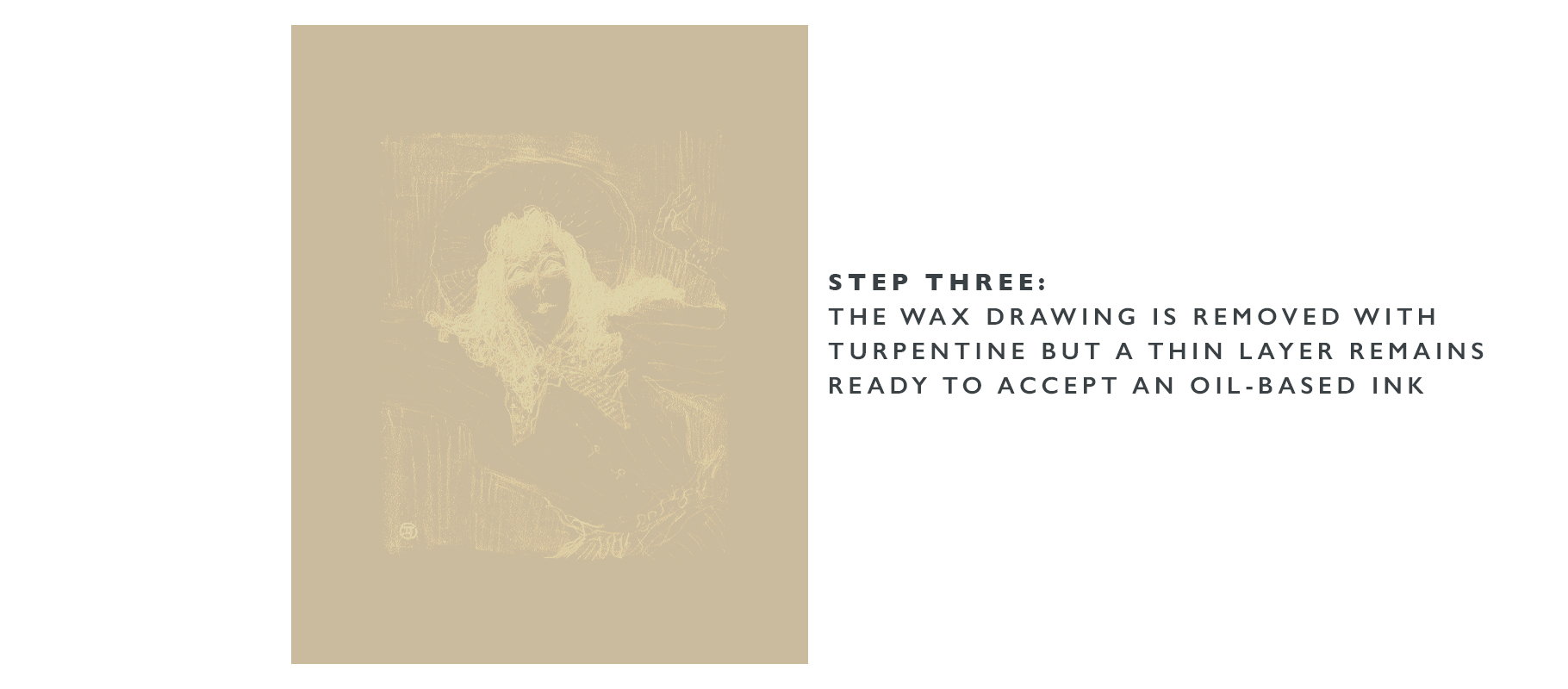
Turpentine is used to remove the original drawing, leaving only a thin layer that is embedded into the stone or metal plate. This area will now accept an oil based ink and is ready for printing. The plate is wetted and applied with ink and pressed upon paper in an even manner.
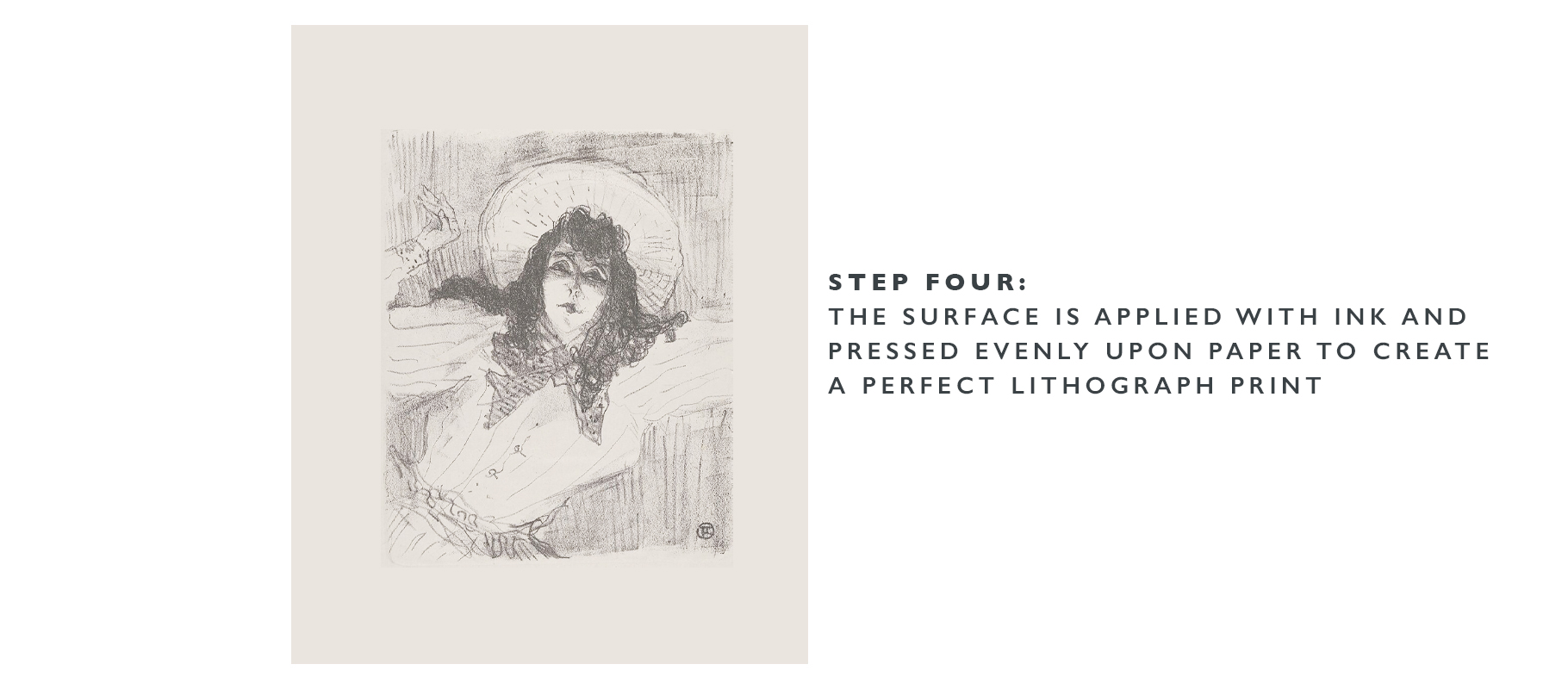
In the early 19th century, colour lithographs were developed by using multiple stone or metal surfaces to print each colour. Some print makers also hand coloured monochrome lithographs.
The history of lithographs
As an artistic medium, lithographs are a fairly modern invention. Their use was not commonplace until the mid 19th century due to a continuous development in their printing process. Once it was perfected, many influential artists began to use it as a simple way of creating effective and numerous prints of their work, providing a new form of income.
 Above: two lithographs by Eugène Delacroix, 1820s
Above: two lithographs by Eugène Delacroix, 1820s
Unlike historic forms of printing that relied on precise line work, lithographs allowed for a hand drawn quality, retaining the true expression of the artist. To the untrained eye, some lithographs may at first appear to be a drawing in pencil or charcoal.
 Above: a detail from a lithograph entitled Saint Mary of the Jura Mountains by Célestin Nanteuil, 1830
Above: a detail from a lithograph entitled Saint Mary of the Jura Mountains by Célestin Nanteuil, 1830
Whilst it was used as an experimental medium for artists such as Henry Fuseli and Benjamin West, lithography became an increasingly important tool for commercial artwork. The famous posters that adorned Paris in the 19th century were almost exclusively created through this process.
 Above: a selection of lithograph posters and advertisements including work by Henri de Toulouse-Lautrec
Above: a selection of lithograph posters and advertisements including work by Henri de Toulouse-Lautrec
The commercial quality slightly diminished the artistic value of lithographs for a few decades, but it was revived by artists of the impressionist and symbolist movements from the 1870s onwards. Artists such as Edgar Degas and Odilon Redon were enthusiastic producers of this method.
 Above: a selection of lithographs by Odilon Redon, 1890s
Above: a selection of lithographs by Odilon Redon, 1890s
Limited edition printing was a concept that became paramount to the success and value of lithographs. Artists realised that to maintain value, they should only create a select number of prints to create a thriving and exclusive market.
 Above: detail from a colour lithograph by Auguste Renoir, 1898
Above: detail from a colour lithograph by Auguste Renoir, 1898
In the early 20th century, Mourlot Studios encouraged the use of stone-based lithographic printing. This process was taken up by artists such as Matisse, Braque, Miro and Picasso who were able to create limited editions with relative ease by simply drawing directly onto the printing plates.
Lithograph care and display
Lithographs suffer from all of the ailments that typically affect paper. One of the most common issues is with foxing, this is a chemical reaction from the acids within the paper as it ages. The quality and materials in the paper determine how dark and widespread the issue becomes. Foxing can be exacerbated by moisture in the environment, so keeping a level humidity is one of the first steps to keeping your lithograph safe.
 Above: two lithograph prints afflicted by foxing
Above: two lithograph prints afflicted by foxing
The relative humidity recommended for paper artworks is around 50% ensuring that the material is not too moist or dry. Mould growth can also affect paper kept in humid conditions, especially if the piece has faced moisture damage from condensation inside the frame or display on damp exterior walls. Conversely, an atmosphere that is too dry may lead to a brittle material and a weakened paper surface that worsens over time.
 Above: a detail from a satirical 1834 lithograph that has been badly affected by moisture and foxing
Above: a detail from a satirical 1834 lithograph that has been badly affected by moisture and foxing
A safe and secure frame is key in ensuring your lithograph is kept in good condition. If a lithograph print is left without a mount or frame it may easily face creasing, stains, scratches and exposure to airborne contaminants such as nicotine or fireplace smoke. However, it is important that any mount, backing board or framing materials used are low in pH and conservation-approved. Store bought or old frames may harbour acids that yellow and darken the paper over time, leaving unsightly marks across the piece. Our framing team always use conservation safe materials and methods to avoid such issues arising in the future.
 Above: a 19th century lithograph print with acid staining
Above: a 19th century lithograph print with acid staining
A colour lithograph is at high risk of fading or colour distortion if it is displayed in direct sunlight. UV rays from sunlight or even bright artificial lights can produce irreparable damage. As with any work on paper, a lithograph print should be kept in shaded conditions and have UV reducing glass installed in the frame to provide further protection. Our framing team provides UV protective glazing as well as museum glass that allows for a reduction of UV rays and a clearer view of your print.
 Above: on the left you can see the colours of the lithograph after exposure to sunlight over time, on the right are the original colours
Above: on the left you can see the colours of the lithograph after exposure to sunlight over time, on the right are the original colours
Lithograph restoration
One of the most common reasons for lithograph restoration is the treatment of staining caused by acidic mounts and backing boards. This can be safely removed by using a tested solution, lifting the acidic issues whilst retaining the original inks and colours of the print. The results following this type of lithograph restoration often surprise and delight our clients, who may have their prints transformed back to their original state when acidic yellowing is removed.
 Above: a print with severe acid damage and discolouration before and after restoration by our paper conservator
Above: a print with severe acid damage and discolouration before and after restoration by our paper conservator
The same can be achieved when removing foxing, this not only clears the visual distraction but helps to prevent the issue spreading further or returning.
 Above: a water damaged print before and after restoration by our paper conservator
Above: a water damaged print before and after restoration by our paper conservator
If your lithograph has faced water damage from a leak or flood, it is important that it is allowed to dry naturally in a clean environment and not heated by industrial drying units. Following the discovery of water damage, always contact a conservator as soon as possible. Our team is always on hand to help you navigate restoration following a household disaster. Our ICON accredited paper conservator is able to remove water stains such as tidal lines that form across the material.
Tears can be restored by repairing each broken fibre and relining the piece on specialist tissue paper. Creases, folds and cockling can also be sensitively flattened to restore both visual impact and the stability of the material.
 Above: a print with folds and discolouration before and after restoration by our paper conservator
Above: a print with folds and discolouration before and after restoration by our paper conservator
Following restoration we recommend that any original framing materials are assessed for acidity. If any issues are found, we can replace these areas with conservation safe options or provide a portfolio of new framing options to choose from.
How can we help?
If you have a lithograph restoration or a similar artwork on paper that requires conservation and care, please contact our helpful team for further advice and information.
To make contact please email us via [email protected] or call 0207 112 7576

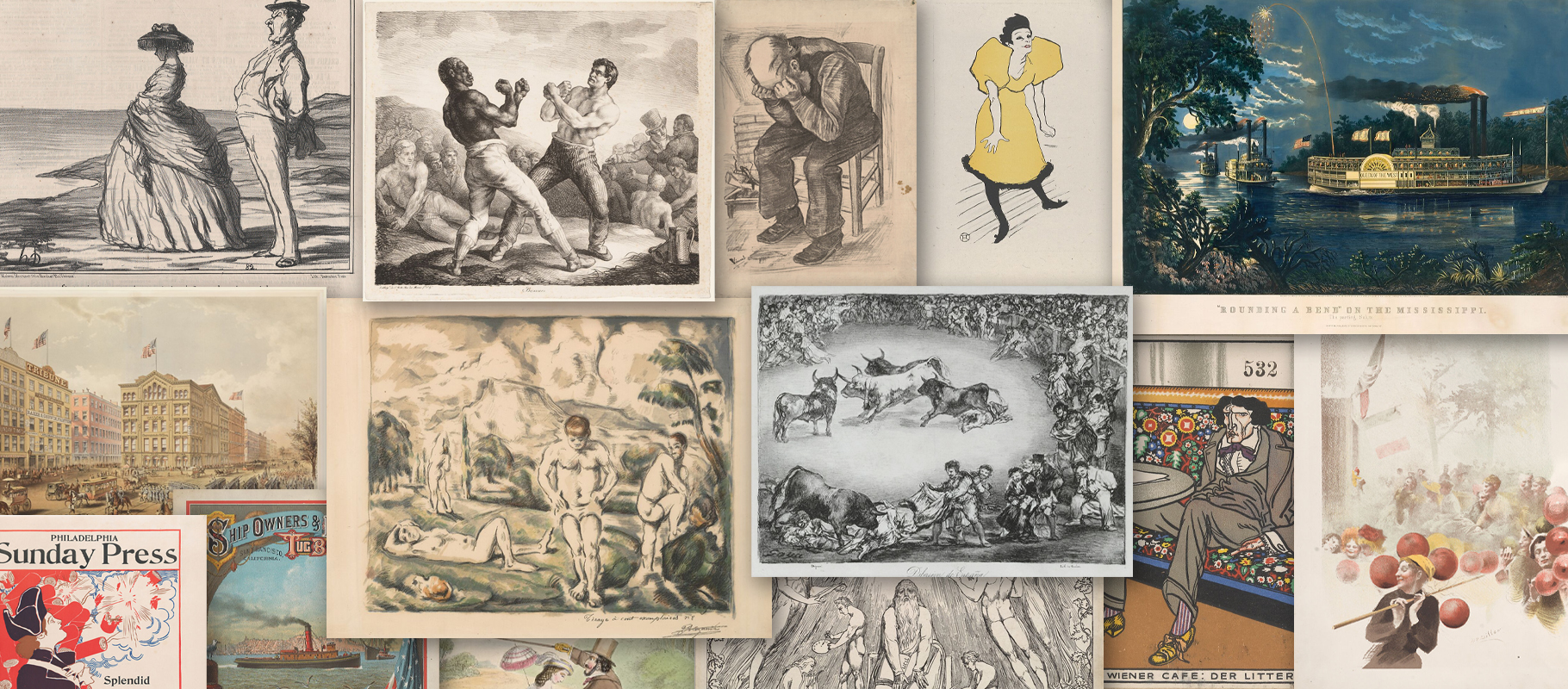 Above: a selection of lithographs including works by Van Gogh, Toulouse-Lautrec, Cezanne and William Blake
Above: a selection of lithographs including works by Van Gogh, Toulouse-Lautrec, Cezanne and William Blake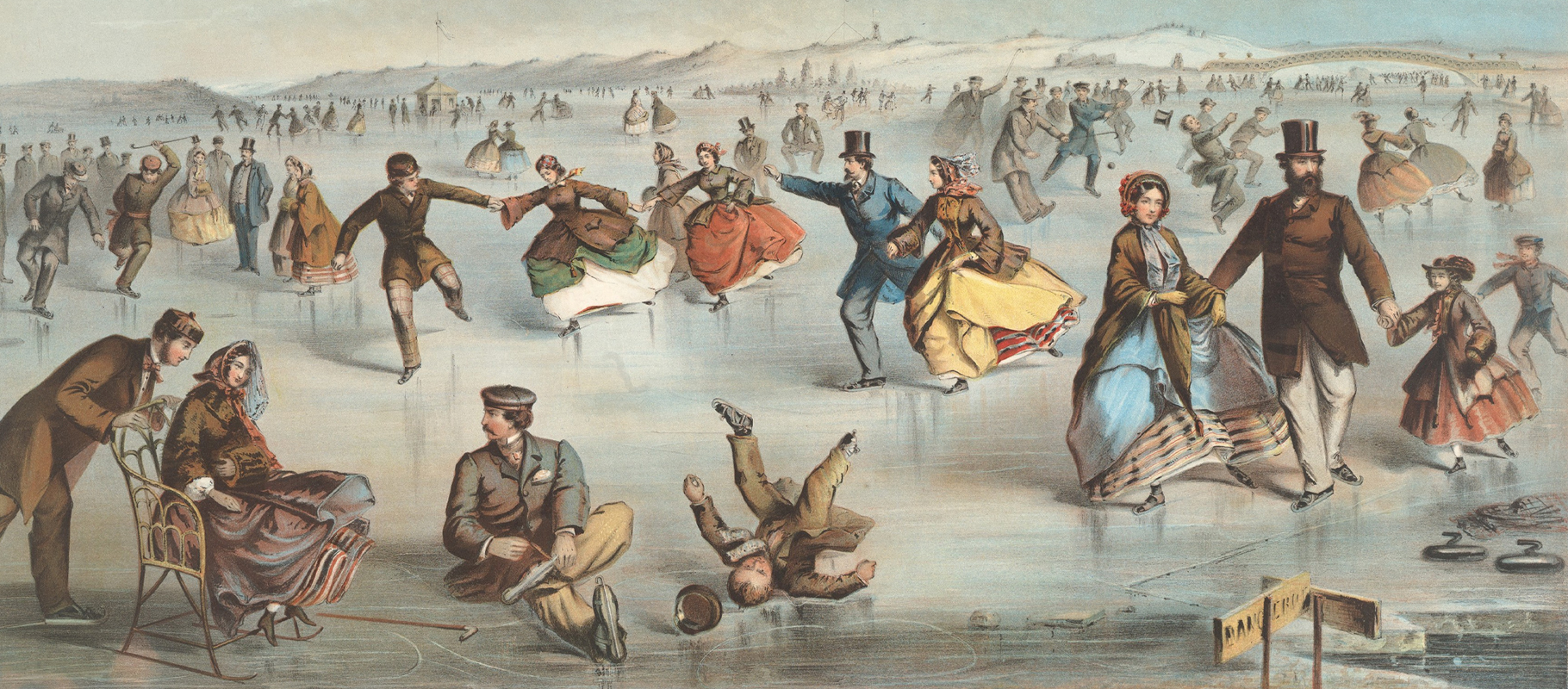 Above: a detail from a chromolithograph of figures skating in New York after Winslow Homer, 1861
Above: a detail from a chromolithograph of figures skating in New York after Winslow Homer, 1861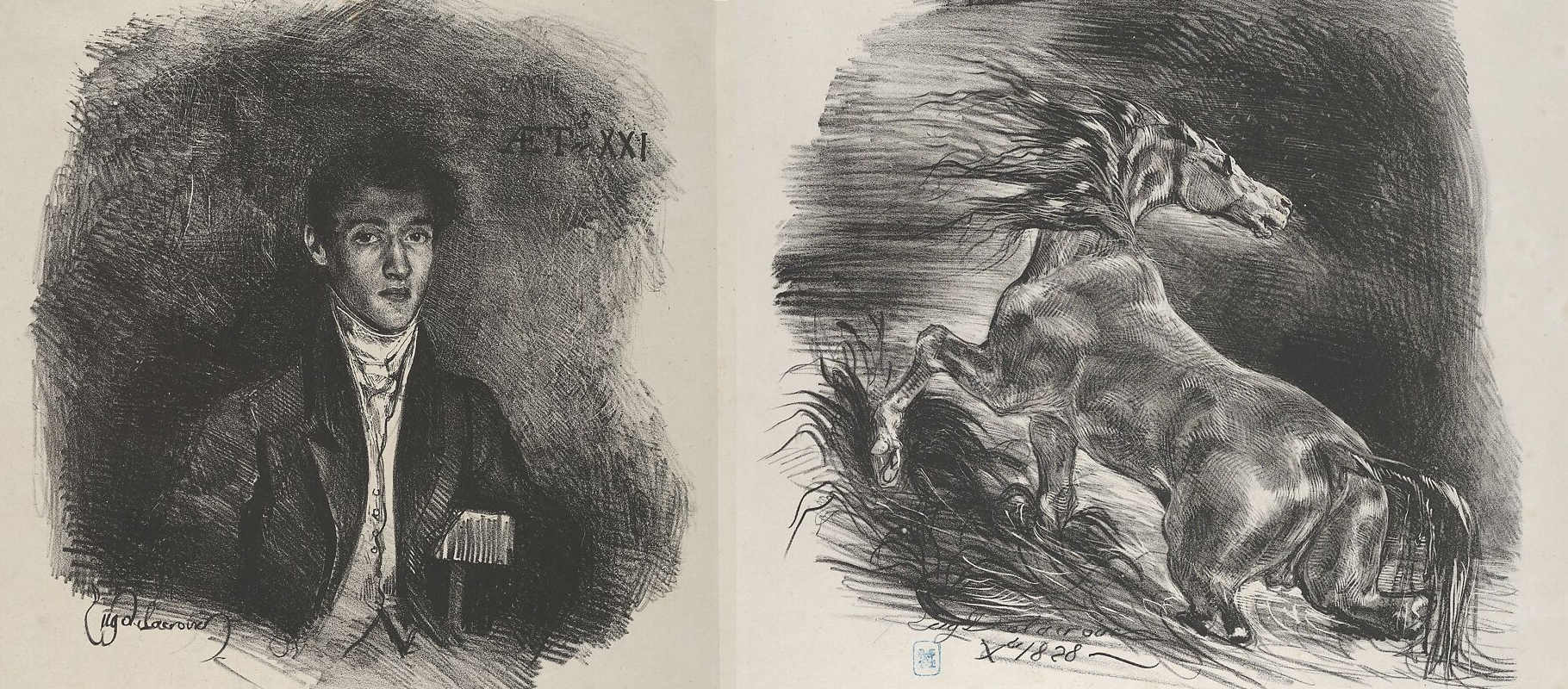 Above: two lithographs by Eugène Delacroix, 1820s
Above: two lithographs by Eugène Delacroix, 1820s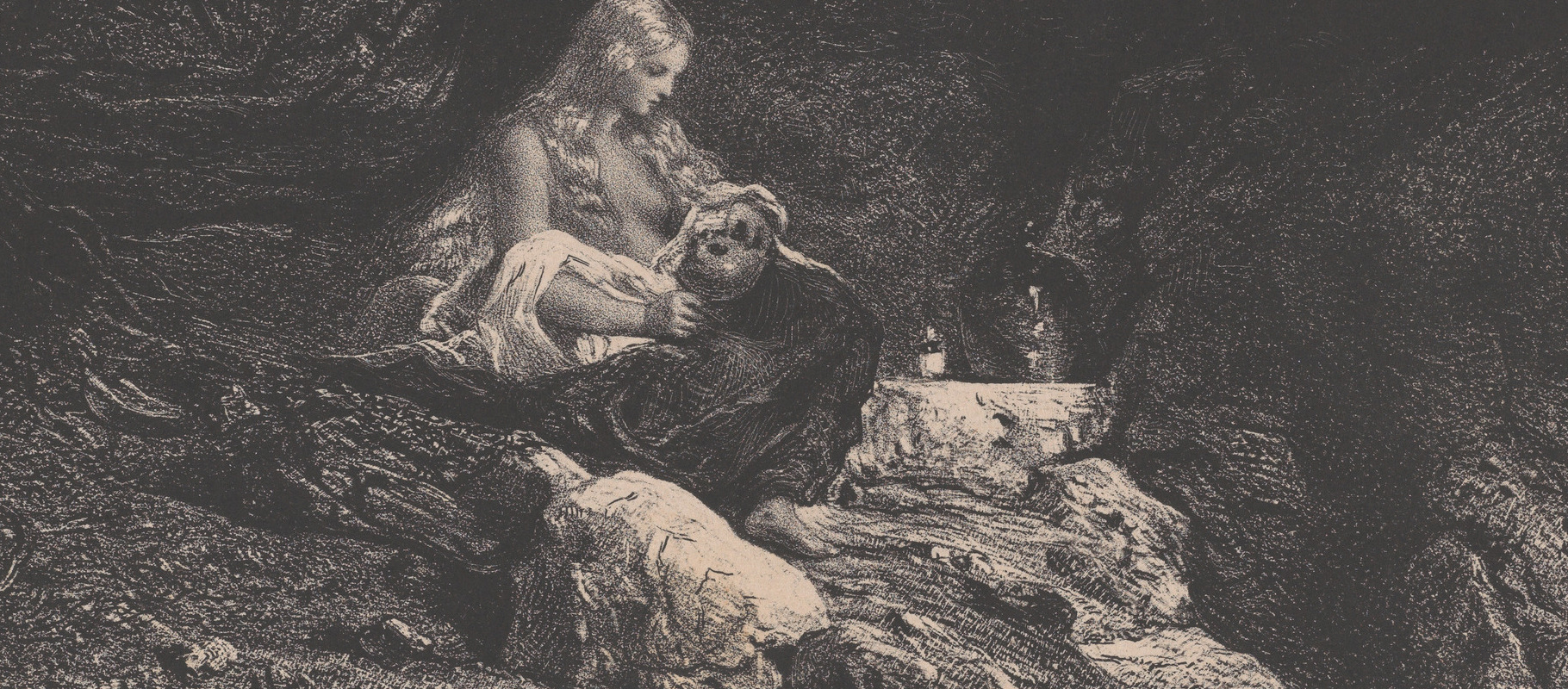 Above: a detail from a lithograph entitled Saint Mary of the Jura Mountains by Célestin Nanteuil, 1830
Above: a detail from a lithograph entitled Saint Mary of the Jura Mountains by Célestin Nanteuil, 1830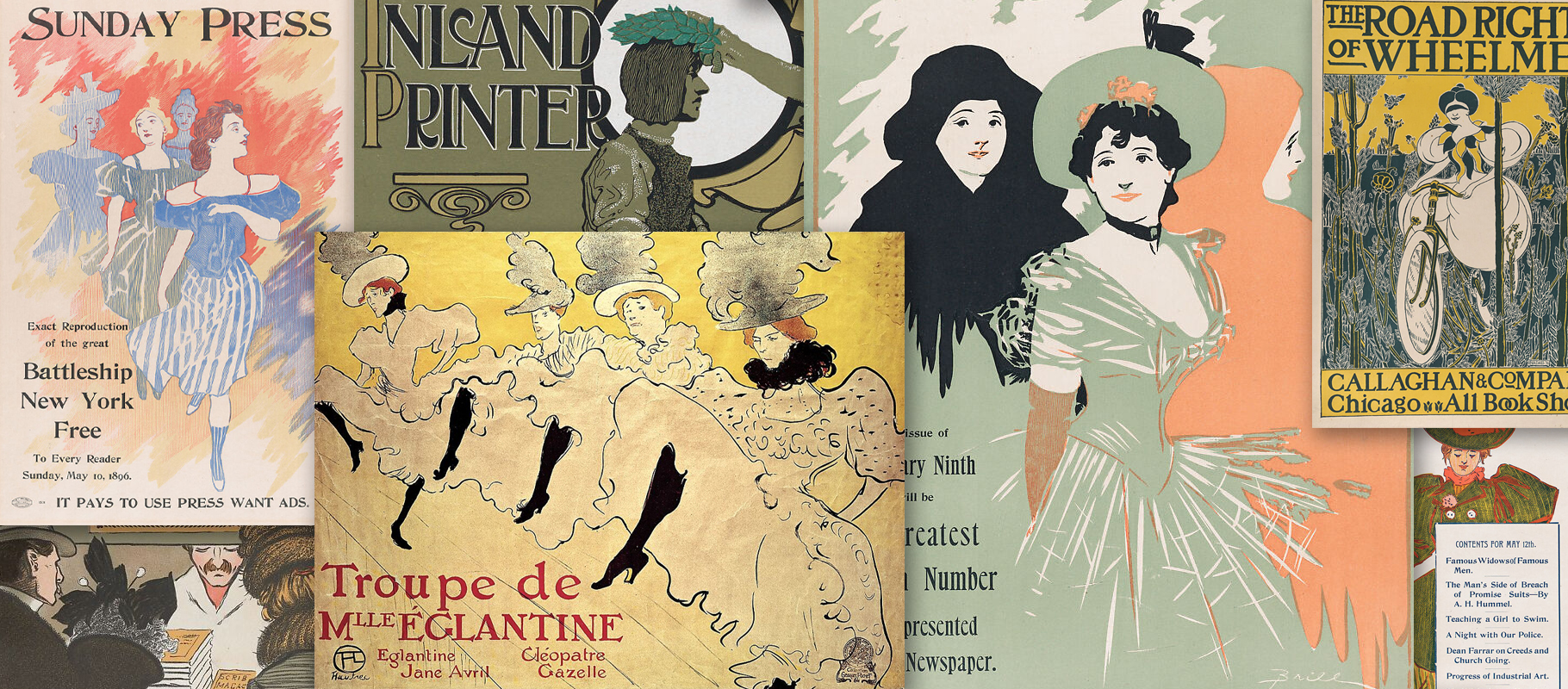 Above: a selection of lithograph posters and advertisements including work by Henri de Toulouse-Lautrec
Above: a selection of lithograph posters and advertisements including work by Henri de Toulouse-Lautrec 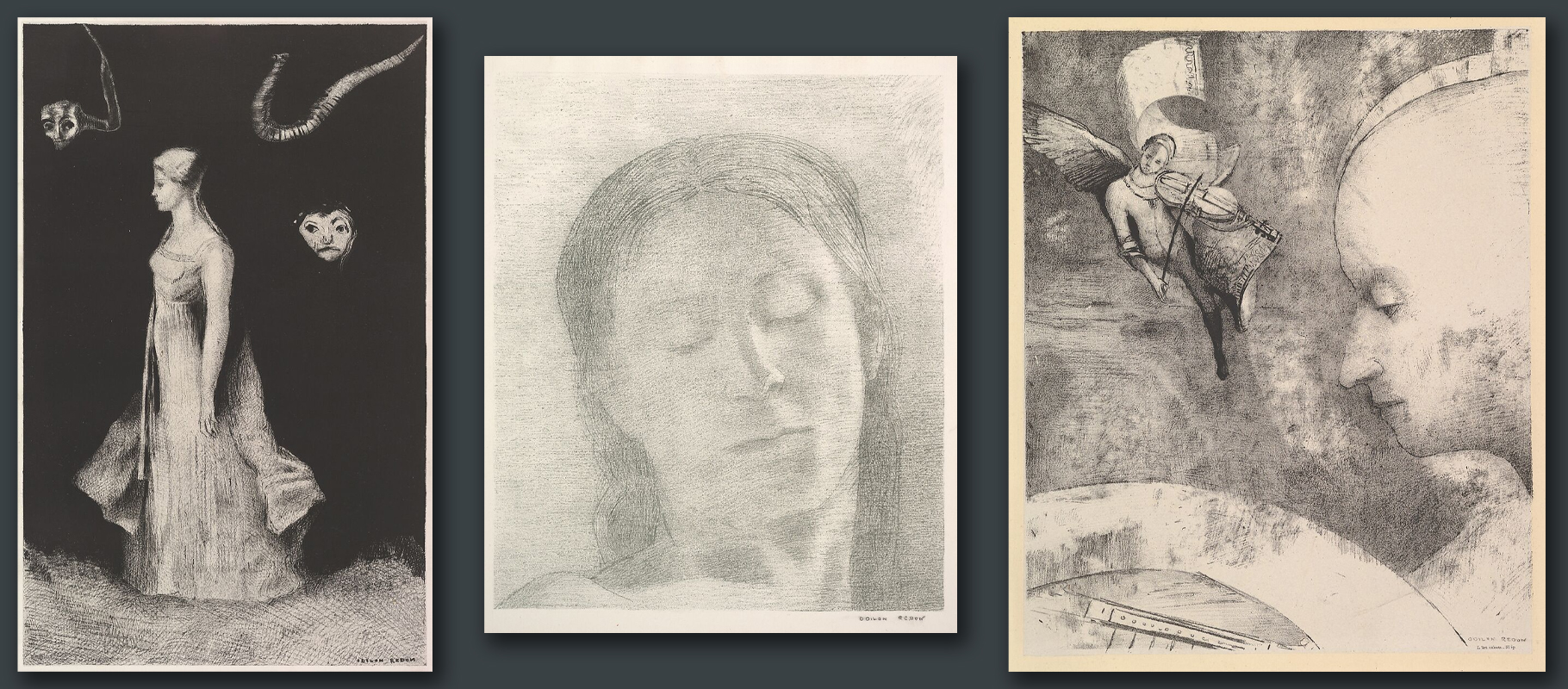 Above: a selection of lithographs by Odilon Redon, 1890s
Above: a selection of lithographs by Odilon Redon, 1890s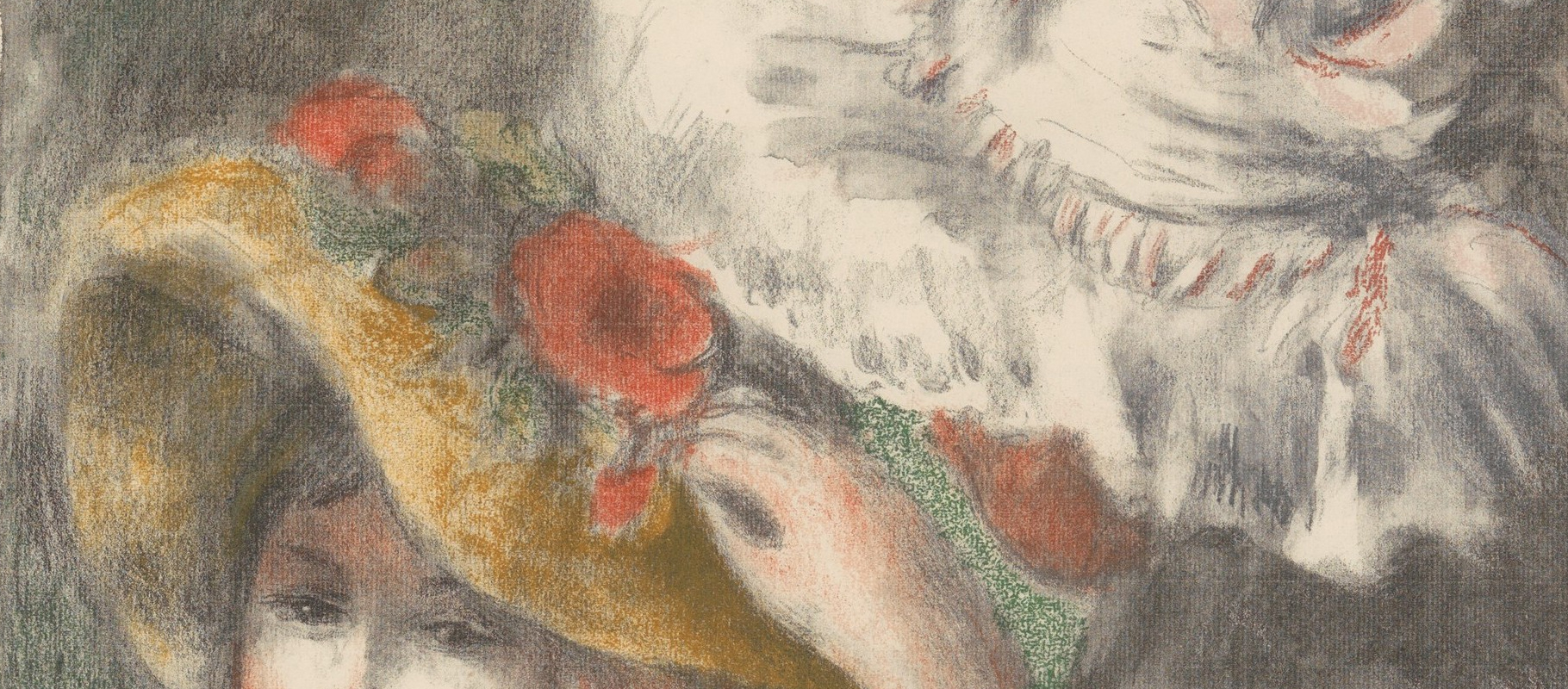 Above: detail from a colour lithograph by Auguste Renoir, 1898
Above: detail from a colour lithograph by Auguste Renoir, 1898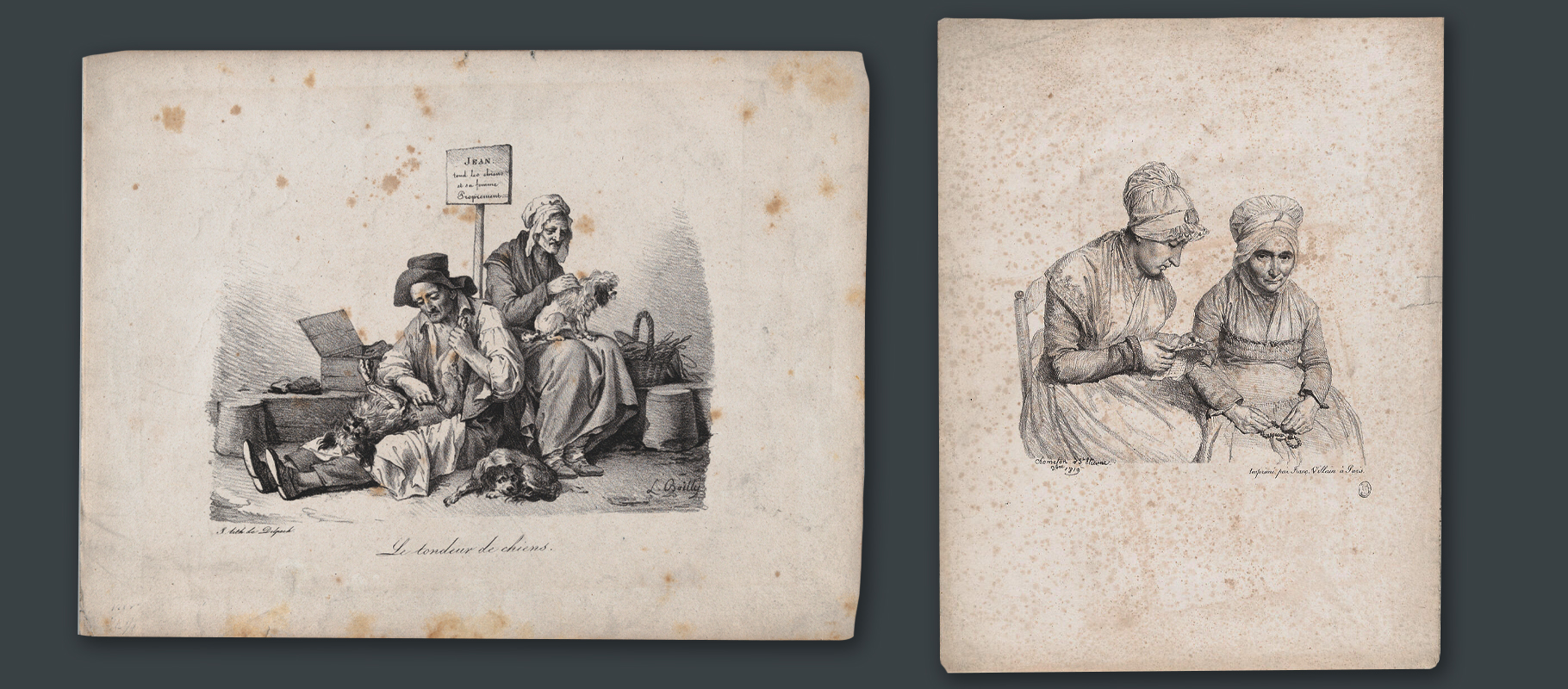 Above: two lithograph prints afflicted by foxing
Above: two lithograph prints afflicted by foxing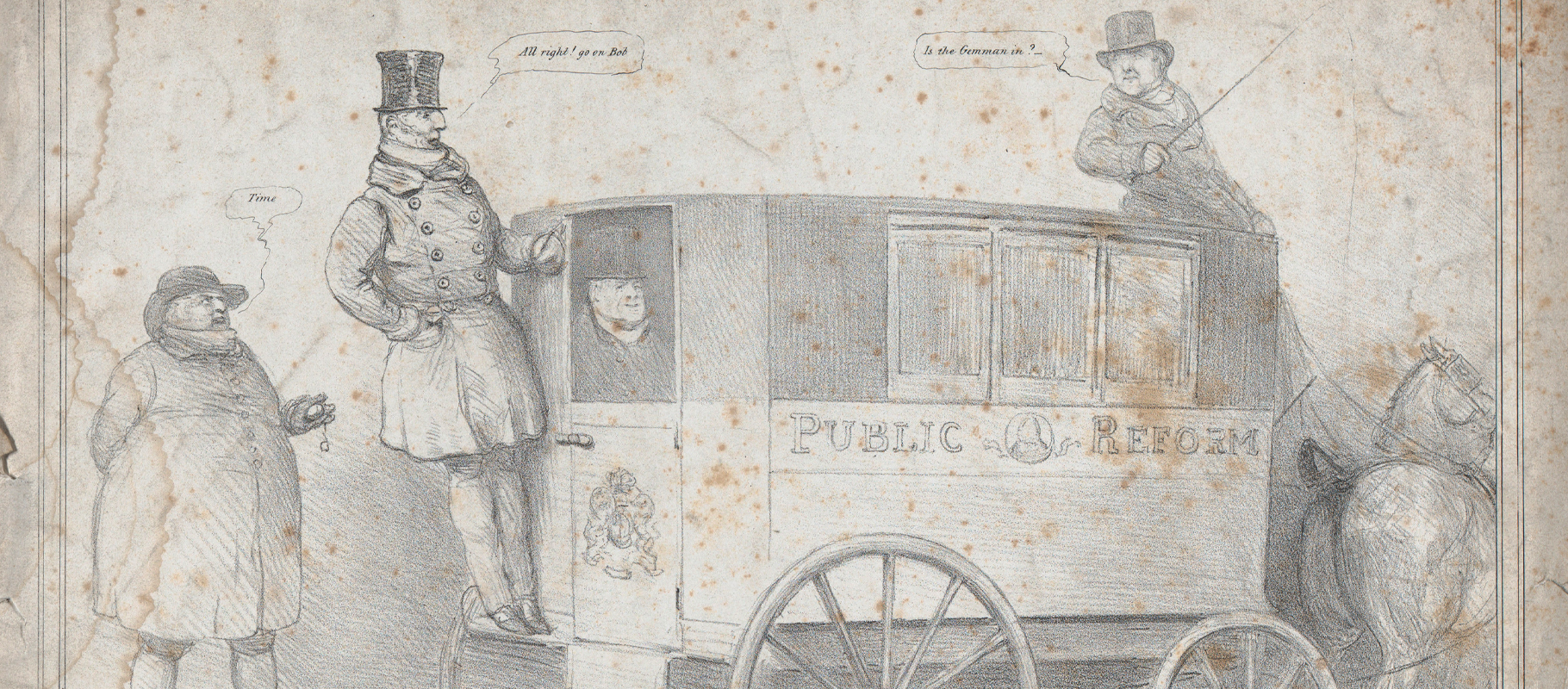 Above: a detail from a satirical 1834 lithograph that has been badly affected by moisture and foxing
Above: a detail from a satirical 1834 lithograph that has been badly affected by moisture and foxing Above: a 19th century lithograph print with acid staining
Above: a 19th century lithograph print with acid staining  Above: on the left you can see the colours of the lithograph after exposure to sunlight over time, on the right are the original colours
Above: on the left you can see the colours of the lithograph after exposure to sunlight over time, on the right are the original colours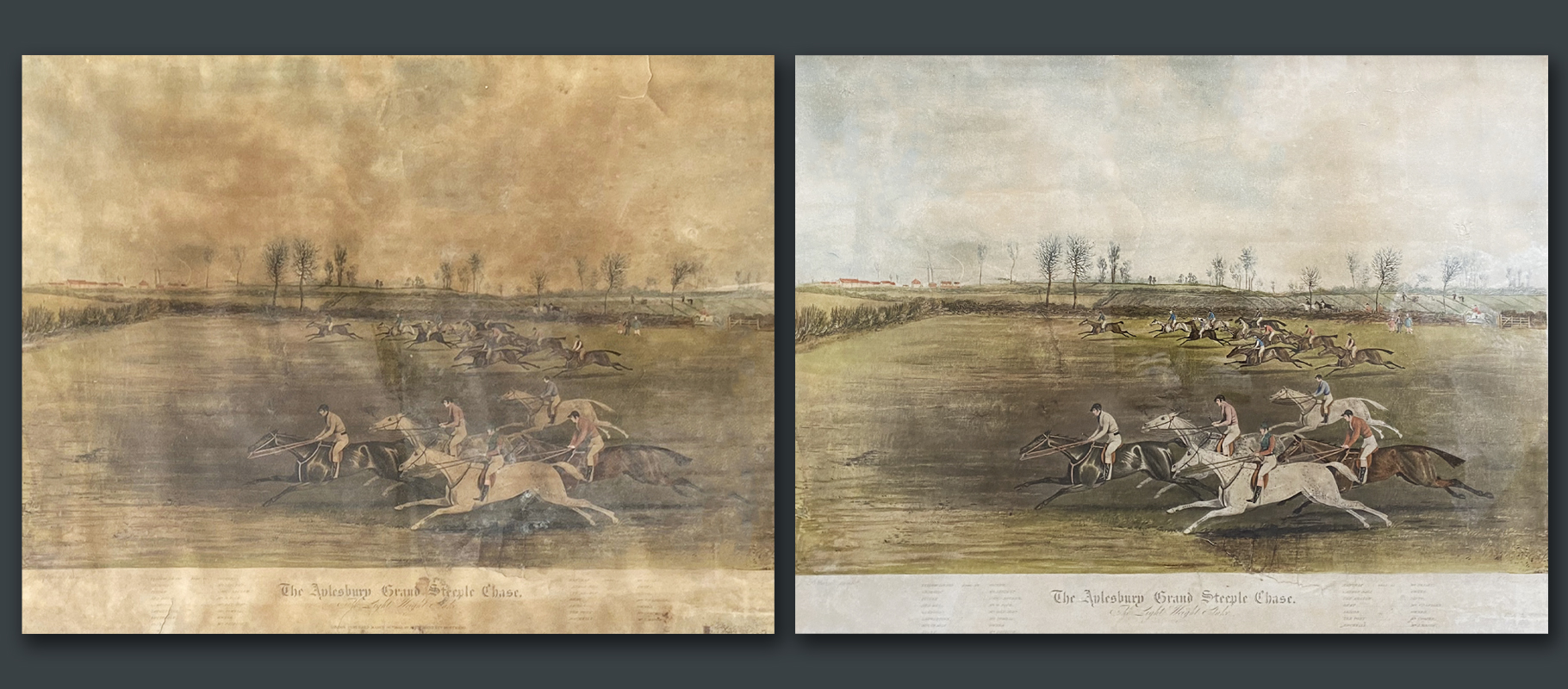 Above: a print with severe acid damage and discolouration before and after restoration by our paper conservator
Above: a print with severe acid damage and discolouration before and after restoration by our paper conservator Above: a water damaged print before and after restoration by our paper conservator
Above: a water damaged print before and after restoration by our paper conservator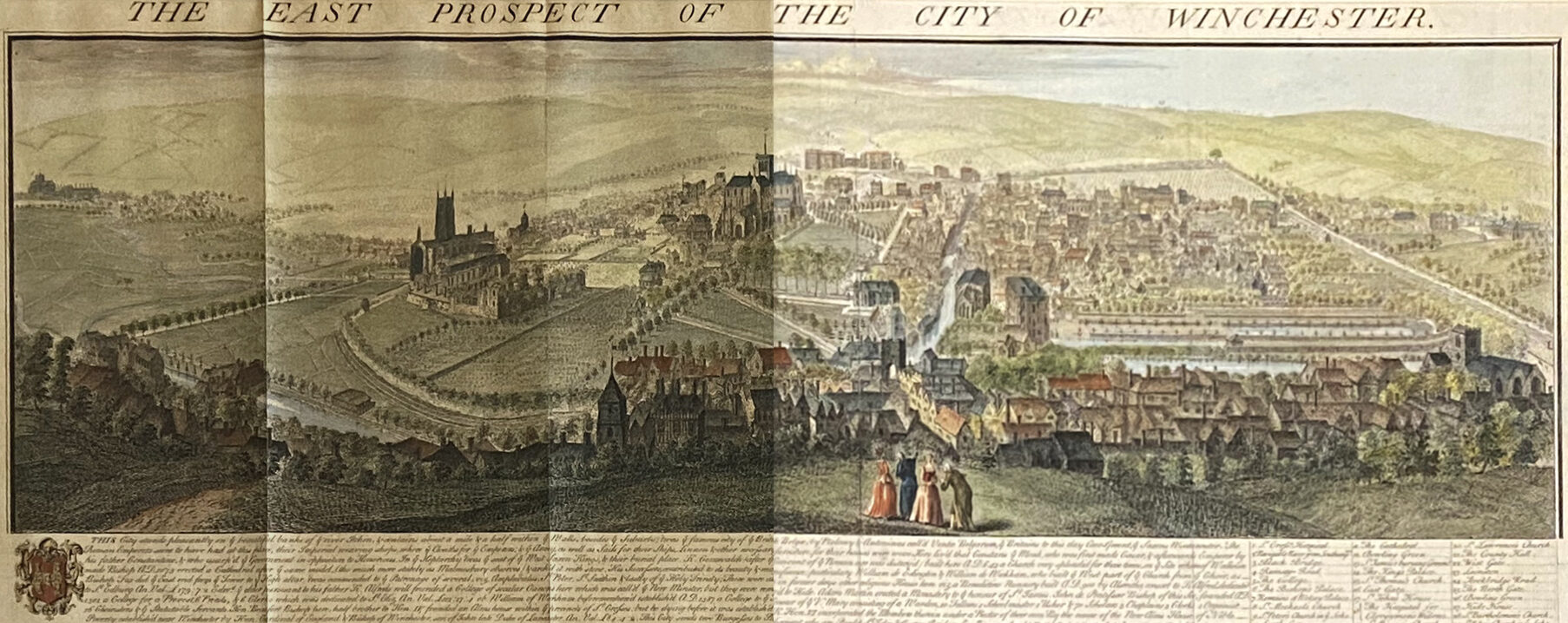 Above: a print with folds and discolouration before and after restoration by our paper conservator
Above: a print with folds and discolouration before and after restoration by our paper conservator




